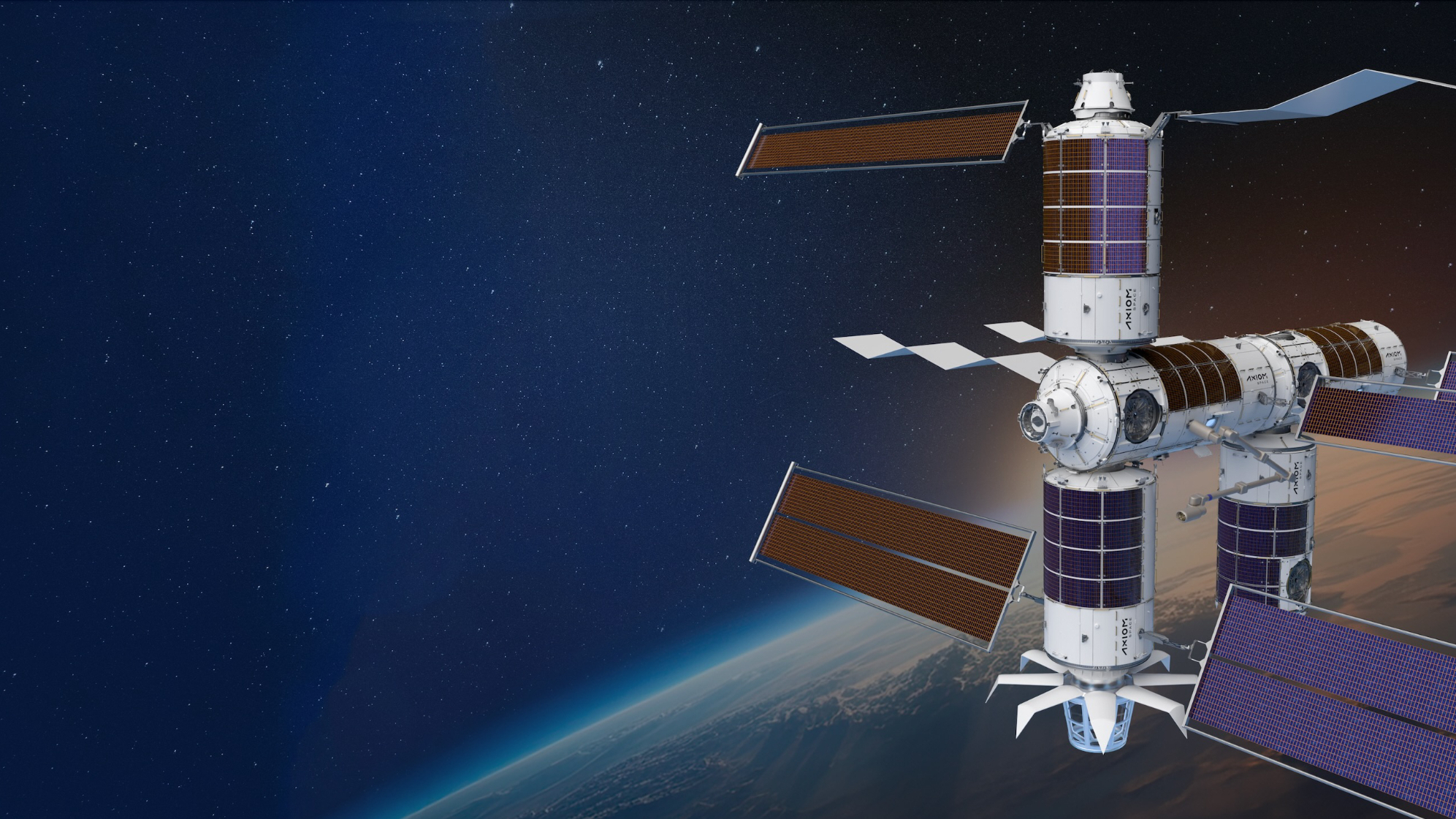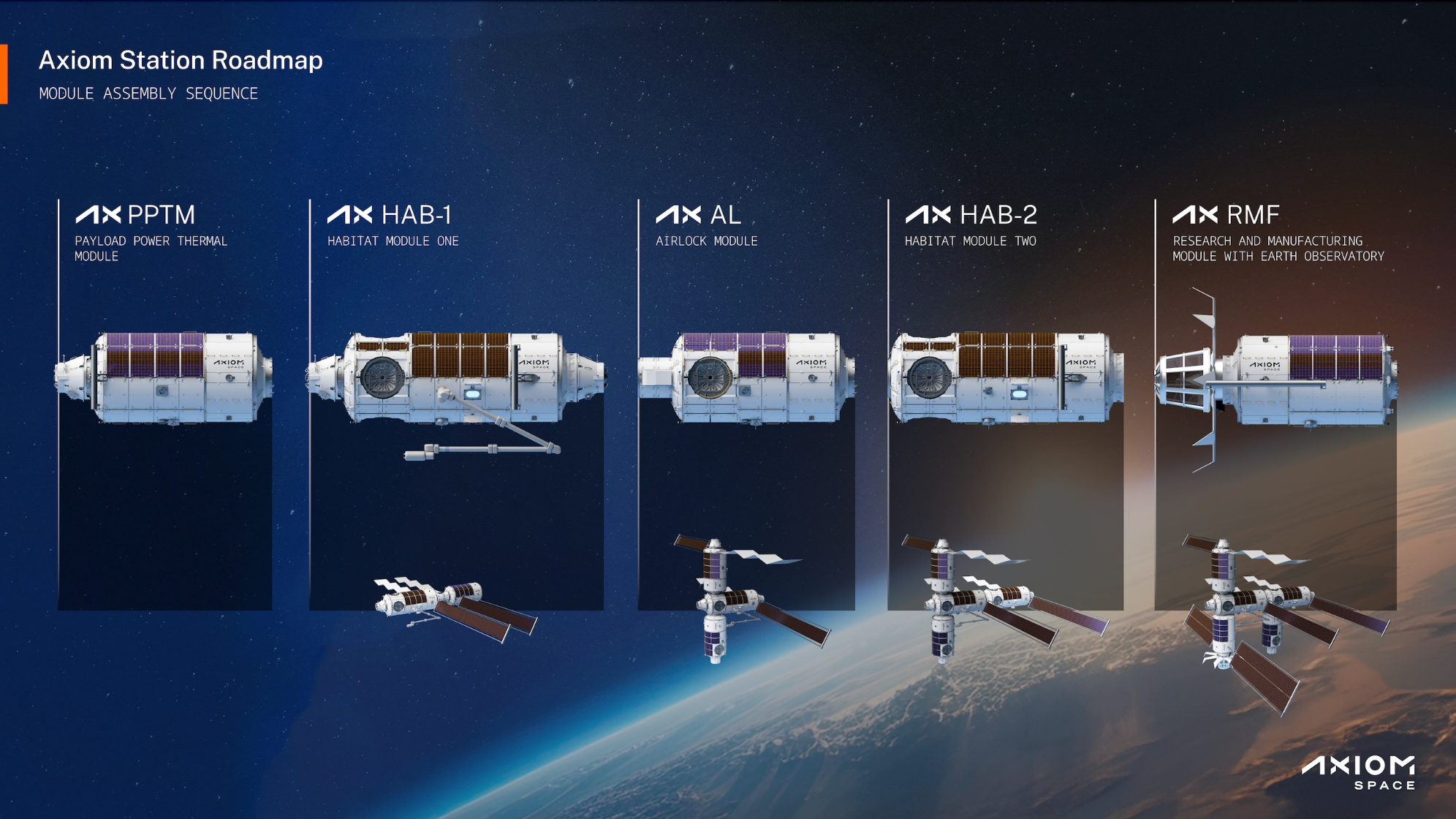
Axiom Space has decided to change up the method for assembling its commercial space station.
By revising the order in which it will launch the station's modules to Earth orbit, Axiom Space will be able to start operating a free-flying platform as early as 2028, the Houston-based company announced this week.
Axiom previously planned to start operating its private space station in 2030, so the new plan moves up the timeline by two years.

NASA awarded Axiom Space a contract in 2020 to attach one or more modules to the International Space Station (ISS), which is set to retire by 2030 at the earliest. The original plan called for Axiom to detach a multi-module group from the ISS, creating a commercial outpost in low Earth orbit that will continue operating after the ISS is gone. But that plan has now been altered.
Related: Axiom Space: Building the off-Earth economy
"Our ongoing assessment of the assembly sequence revealed opportunities for flexibility and enhancements," Axiom Station program manager and Chief Operating Officer Mark Greeley said in a company statement on Dec. 18. "With the International Space Station needing to protect for the ability to accommodate a deorbit vehicle on station, we were able to accelerate this work to support the program's requirements."
To create its space station, Axiom plans to launch five modules: a payload/power/thermal element, an airlock, a research/manufacturing hub, and a pair of habitat modules. The original plan was for Axiom to launch the Habitat 1 module to the ISS first, followed by the additional elements.
The new assembly sequence will see the Payload, Power and Thermal module launch to the ISS first. This module could detach from the station — and become a free flyer called Axiom Station — as soon as 2028, according to the company.
After that happens, Axiom will continue assembling the outpost, launching the Habitat 1 module to meet up with it. Habitat 1 will be followed by the airlock, the Habitat 2 module, and then the research and manufacturing facility.
"The updated assembly sequence has been coordinated with NASA to support both NASA and Axiom Space needs and plans for a smooth transition in low Earth orbit," Angela Hart, a manager for the Commercial Low Earth Orbit Development Program at NASA's Johnson Space Center in Houston, said in an agency statement.
The new assembly sequence will help the Axiom space station to depart the ISS sooner, which means Axiom Station will be able to support free-flight operations faster than the original plan allowed. It also protects space on the ISS for a planned SpaceX deorbit vehicle, which will bring the huge outpost down for controlled destruction in Earth's atmosphere in 2030 or thereabouts.
"Our goal is to ensure a smooth transition from a government to a commercial platform, maintaining a continuous human presence on orbit to serve a community of global customers and partners, to include NASA," Greeley said in the Axiom statement.
Founded in 2016 and based in Houston, Axiom Space made history with its Ax-1 mission in April 2021, when the company became the first to bring a flight of all private citizens to the ISS.
With the ISS' impending retirement, a new era of private space stations is set for the coming years, with SpaceX, Blue Origin, Sierra Space and others all looking to play a role.







